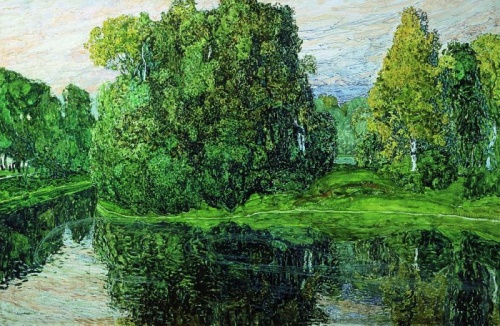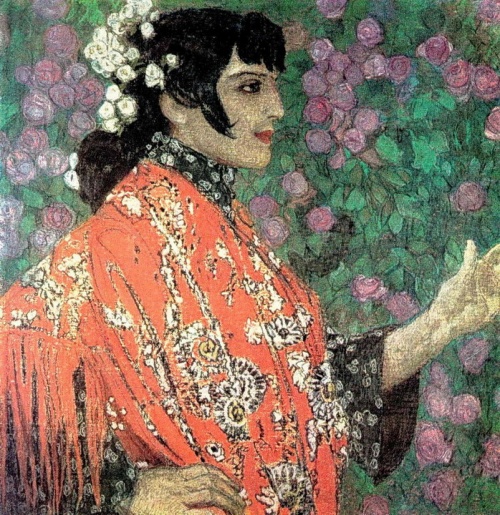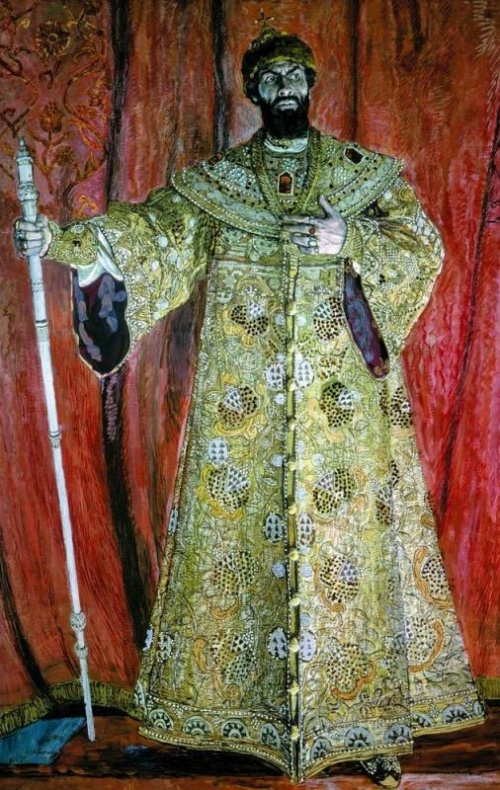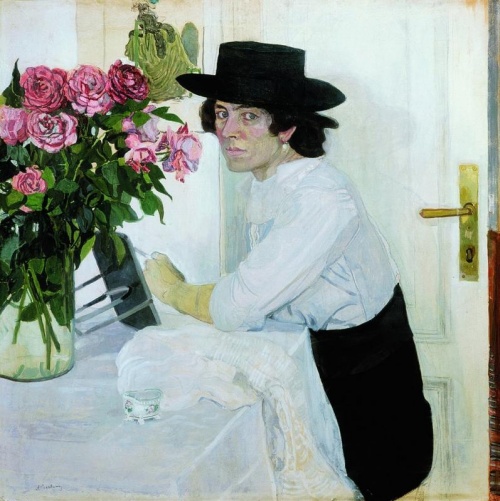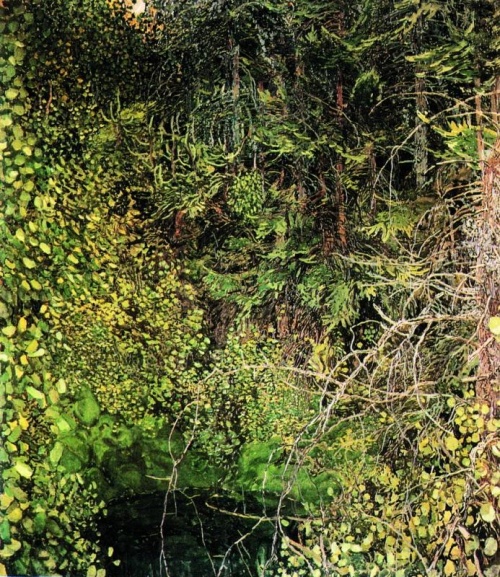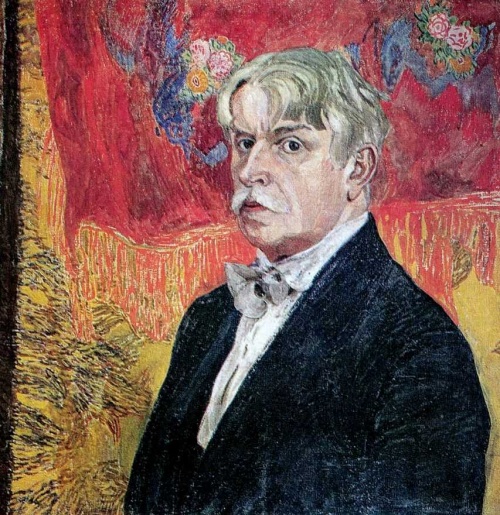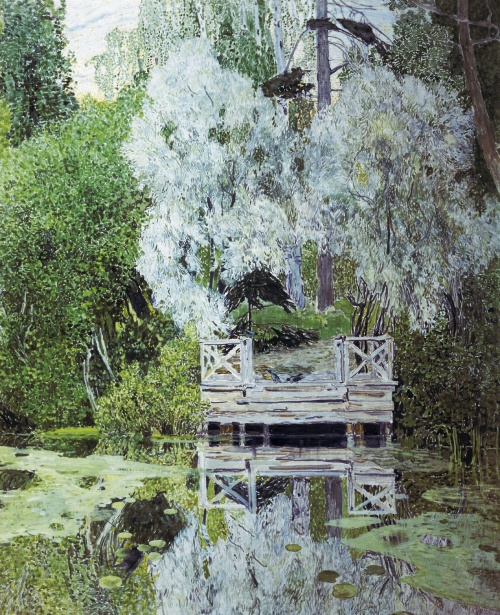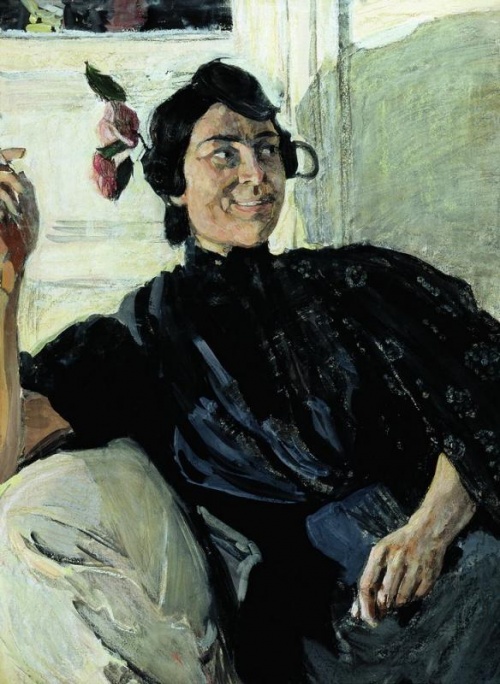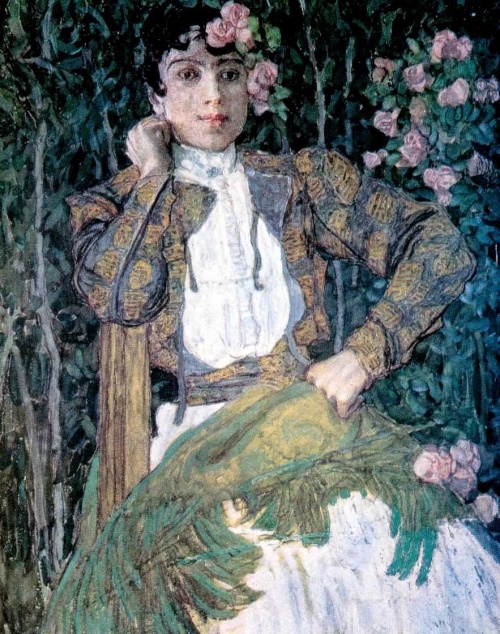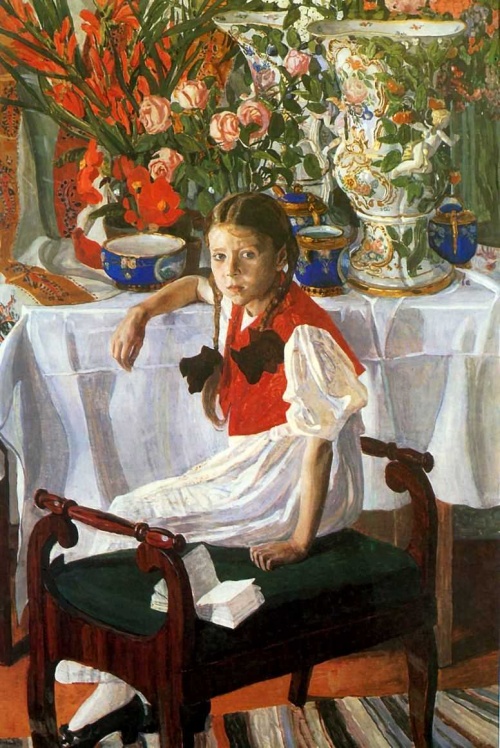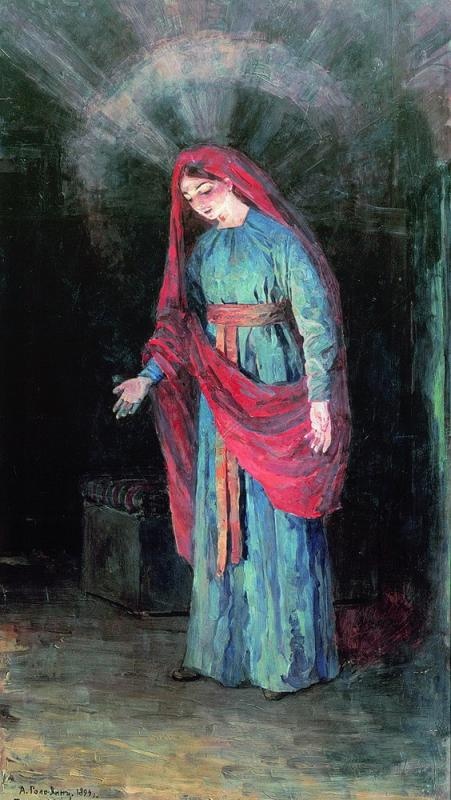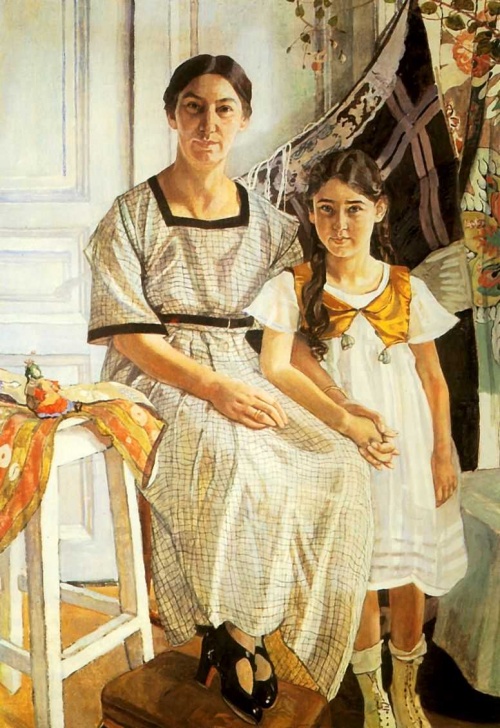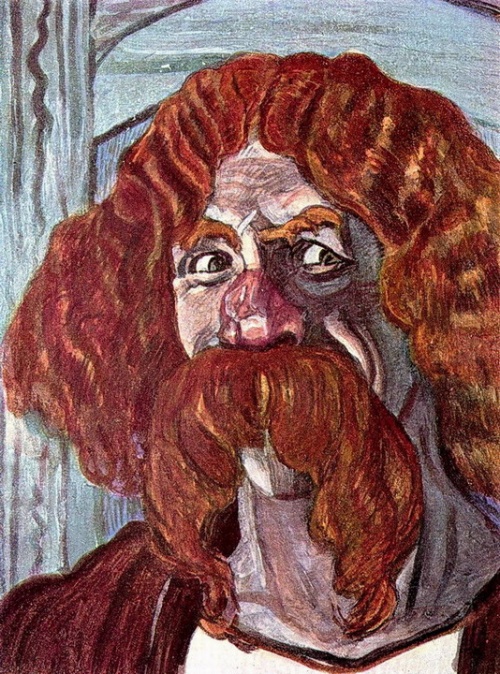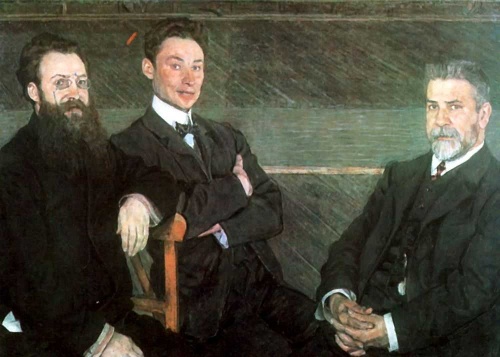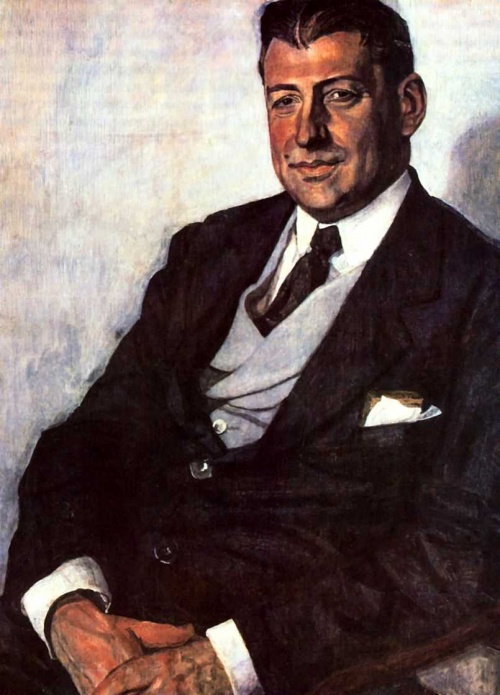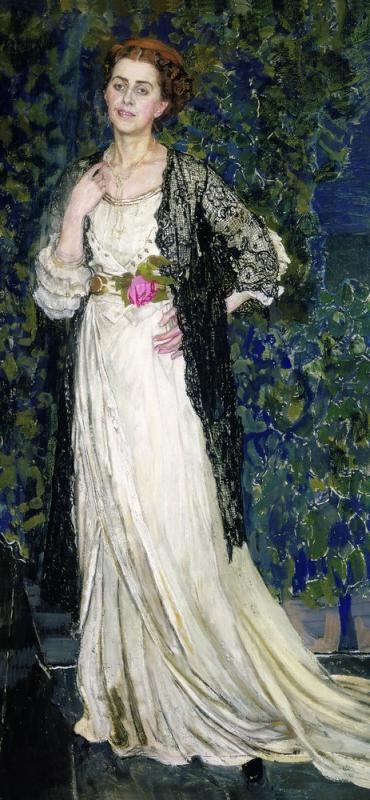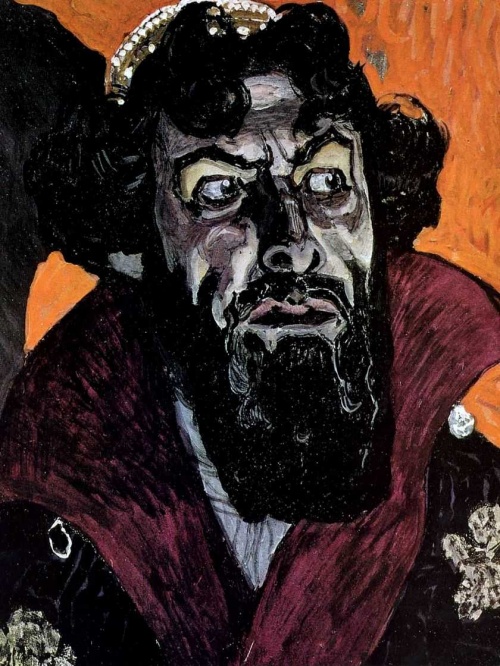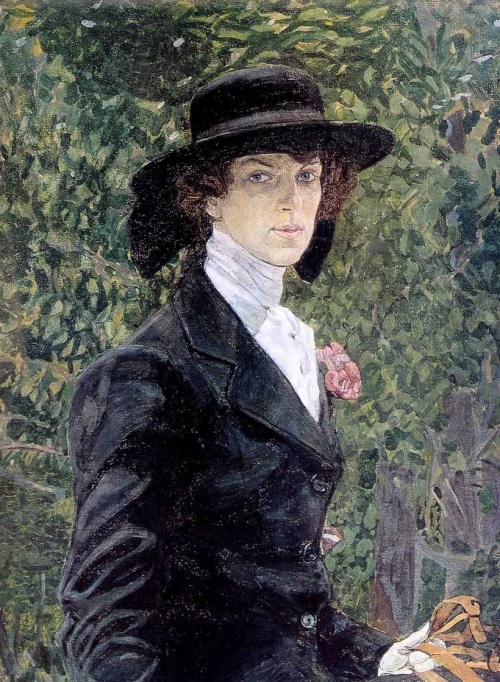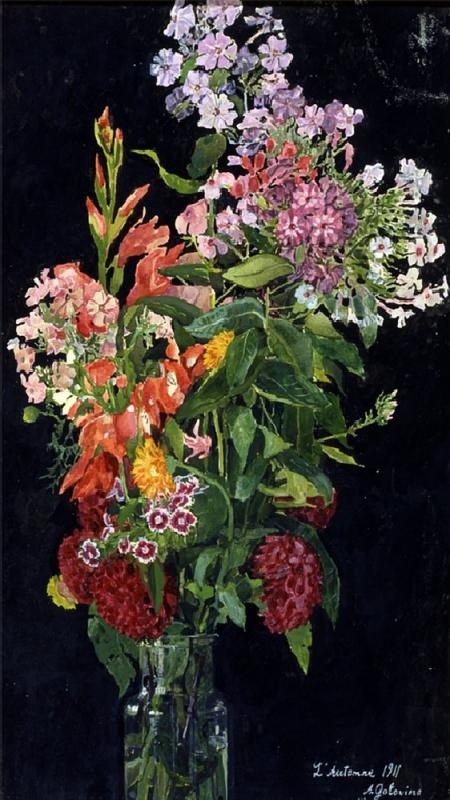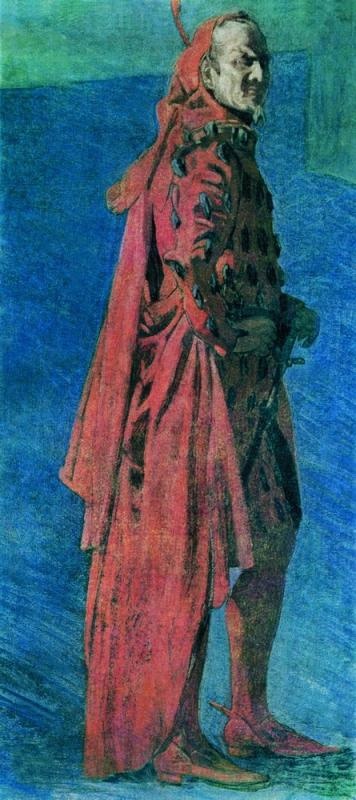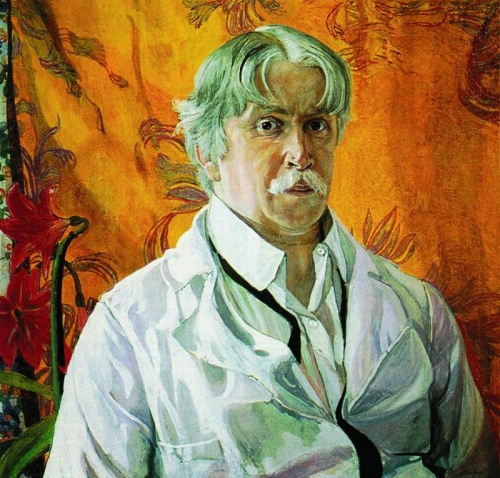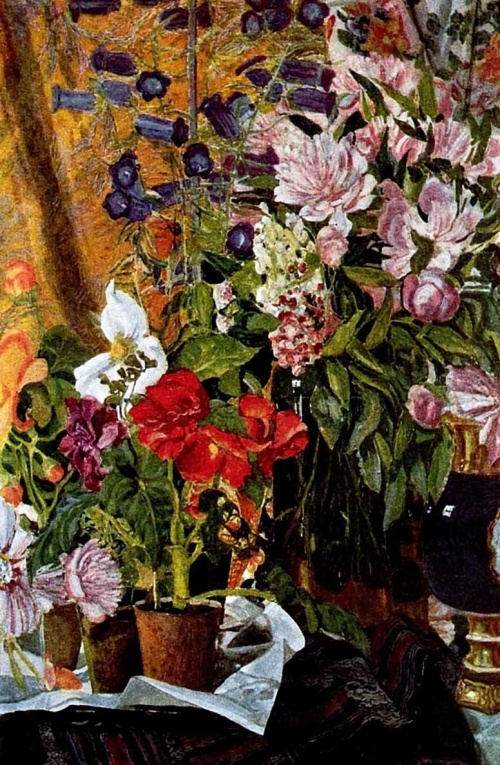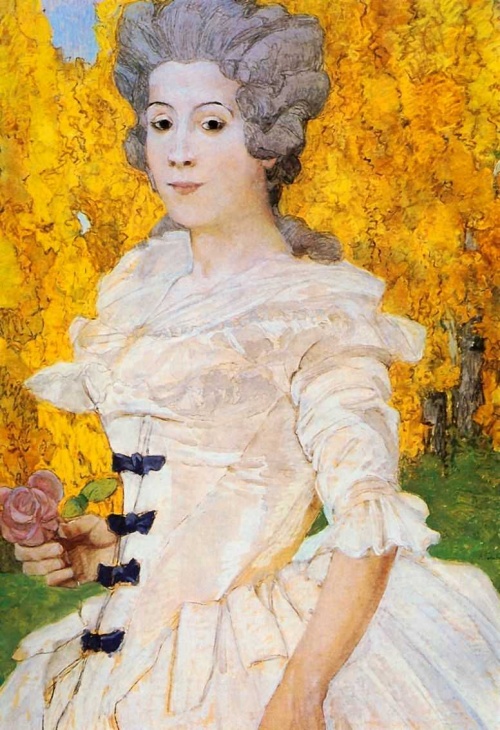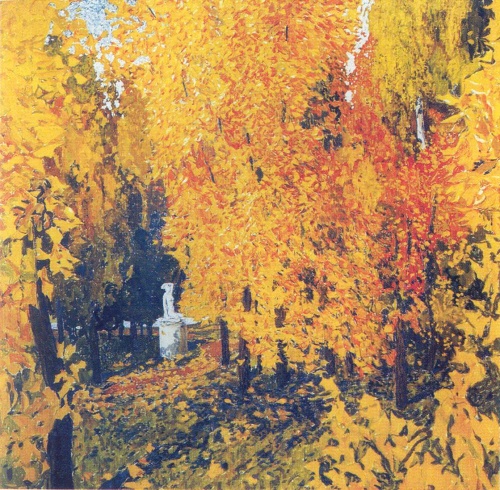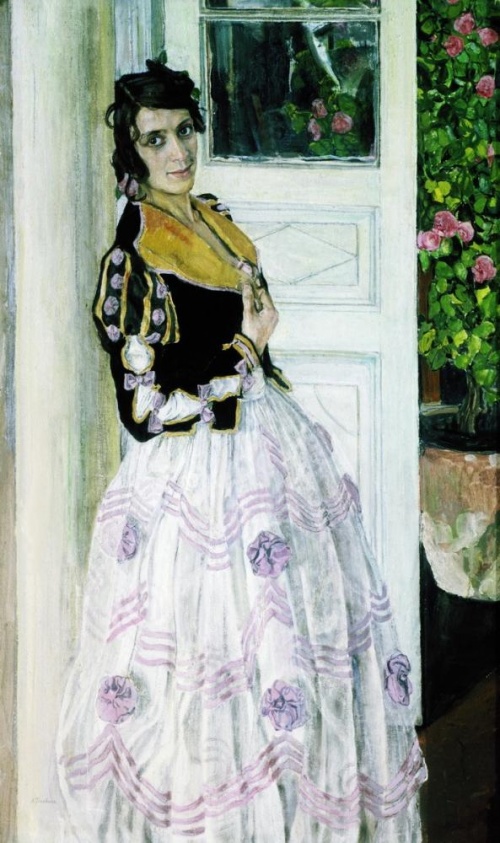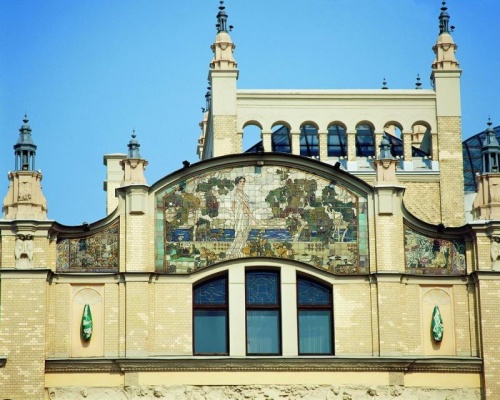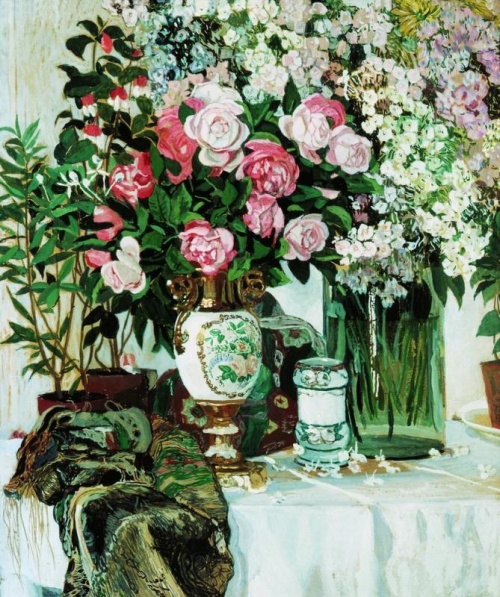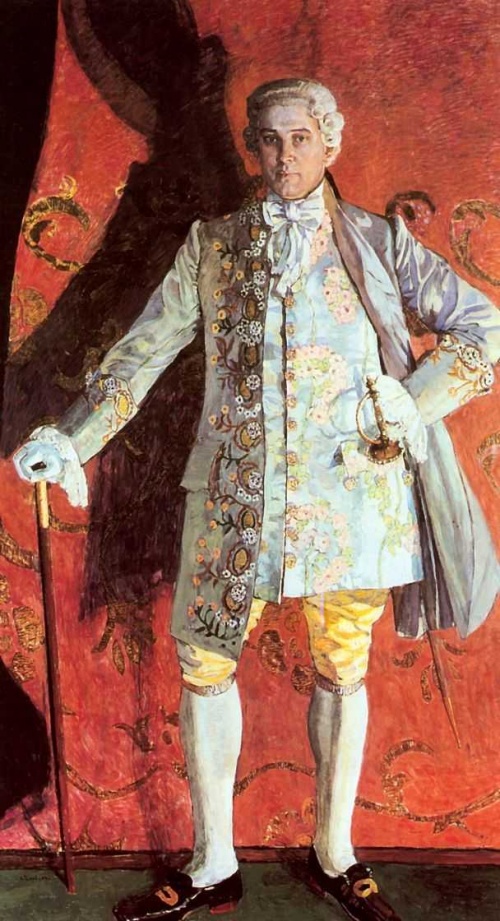Golovin Alexander Yakovlevich (1863 - 1930) (126 works)
Разрешение картинок от 800x276px до 1609x1600px
Golovin Alexander Yakovlevich - Russian painter, graphic artist, set designer, artist of decorative and applied arts, representative of symbolism and modernism, interior and furniture designer, active member of the World of Art association, the Union of Russian Artists, the Association of the Wanderers, member of the Academy of Arts, People's Artist of the RSFSR.
Born into a priest's family. In 1872-1879 he studied at the Katkovsky Lyceum in Moscow, where he received his initial art education under the guidance of I. D. Neradovsky. In 1881 he entered the MUZHVIZ, first studied in the architectural department, in 1883 he switched to painting, studied with I. M. Pryanishnikov, V. E. Makovsky, E. S. Sorokin, P. S. Sorokin, V. D. Polenov. From 1884 he also attended Polenov’s drawing evenings. In 1887-1888 he was awarded two small silver medals for a pictorial sketch and drawing from life. In 1889 he painted the painting “The Descent from the Cross”, for which he received a large silver medal and was released from the School with the title of class artist. In the 1880s, he became close to S.I. Mamontov and the artists of the Abramtsevo circle, and repeatedly visited Mamontov’s estate near Moscow.
In 1889 he lived in Paris, attended the School of F. Colarossi, where he studied under the guidance of J.-E. Blanche and J. Simon. In the early 1890s he worked for the contractor A. A. Tomashko, painting interiors. Since 1893 he participated in exhibitions, exhibited his paintings at exhibitions of the TPHV (1893, 1895), the Moscow Association of Artists (1893, 1901-1902), and the Moscow Society of Art Lovers (1894-1898).
In the 1890s he traveled repeatedly to Italy and France. In 1897 he studied at the Vitti Academy with R. Collen and O. Merson. In 1898 he studied ceramics techniques in Spain.
In the late 1890s he worked at Mamontov's Abramtsevo pottery factory behind the Butyrskaya outpost in Moscow. Based on Golovin’s sketches, the factory produced majolica exhibitions, vases, dishes, etc. In 1900-1903 he created the majolica frieze “The Seasons” and several decorative panels on mythological subjects (“Cleopatra”, “Worship of Nature”, “Worship of the Deity”, “Bathing Naiads”, “Thirst”) for the facades of the Metropol Hotel in Moscow .
In 1898-1900, together with K. A. Korovin, M. F. Yakunchikova and E. D. Polenova, he worked on the interiors of the Handicraft Pavilion and the Pavilion of the Outskirts of Russia at the World Exhibition in Paris in 1900. For his works in ceramics he was awarded gold and silver medals .
Since 1899 he has participated in exhibitions of the World of Art, and since 1902 he has been a member of the association. collaborated in the magazine of the same name. In 1903 he joined the Union of Russian Artists.
In 1898 he was appointed to the position of decorative artist for the Imperial Theatres. He designed the performances of the Bolshoi Theater in Moscow, in particular the operas by A. N. Koreshchenko “The Ice House” (1900), and N. A. Rimsky-Korsakov’s “The Pskov Woman” (1901). In 1901 he moved to St. Petersburg, from 1902 he held the post of chief decorator of the Imperial Theaters and consultant to the directorate on artistic issues. He worked for the Alexandrinsky and Mariinsky theaters, including creating sketches of costumes and scenery for the operas “Carmen” by J. Bizet (1908), “Orpheus and Eurydice” by K. V. Gluck (1911), “The Stone Guest” by A. S. Dargomyzhsky (1917); performances "At the Gates of the Kingdom" by K. Hamsun (1908), "The Thunderstorm" by A. N. Ostrovsky (1916), "Masquerade" by M. Yu. Lermontov (1917), "The Song of the Nightingale" by I. F. Stravinsky (1919) and many others.
In 1908-1917 he collaborated with V. E. Meyerhold. In 1909-1910 he designed the productions of Diaghilev's enterprise Russian Seasons in Paris, including, together with N.K. Roerich and D.S. Stelletsky, he created costumes and scenery for the operas "Boris Godunov" by M.P. Mussorgsky, "The Woman of Pskov" by N. A. Rimsky-Korsakov, as well as the scenery for the ballet “The Firebird” by I. F. Stravinsky.
In the late 1900s - early 1910s he worked in the art and ceramic workshops of P.K. Vaulin in Kikerino near St. Petersburg.
In 1912 he was elected a full member of the Imperial Academy of Arts. In 1913 he settled in Detskoye Selo near St. Petersburg.
After the revolution, he took an active part in the activities of the House of Arts. In 1919 he exhibited his works at the First State Free Exhibition of Works of Art, exhibitions of theatrical and decorative art in Leningrad (1927) and Moscow (1928). From 1926 he collaborated with K. S. Stanislavsky at the Moscow Art Theater, designing productions of the plays “A Mad Day, or The Marriage of Figaro” by P. Beaumarchais (1927), “Othello” by W. Shakespeare (1930). In 1928 he was awarded the title "People's Artist of the RSFSR". Golovin died in Detskoe Selo on April 17, 1930.
Golovin is one of the most significant Russian artists of the turn of the 19th-20th centuries, who distinguished himself in a variety of fields of art - painting, graphics, set design, and ceramics. The heyday of his work occurred in the 1900s - 1910s and is entirely associated with the aesthetics of Art Nouveau, based on which the artist was able to develop his own recognizable style. His works, both in painting and in applied art, are characterized by extraordinary, sometimes even excessive, decorativeness, colorfulness, and sophistication of graphic design. Favorite in Golovin’s work were ornamental plant motifs, which are found in abundance on ceramic products based on his design.
deputy, picturesque panels, theatrical scenery.
Golovin's works are in many museum collections, including the State Tretyakov Gallery, the State Russian Museum, the Pushkin Museum. A. S. Pushkin, State Central Theater Museum named after. A. A. Bakhrushin and many others.
